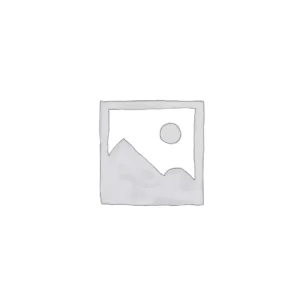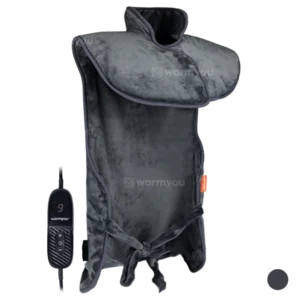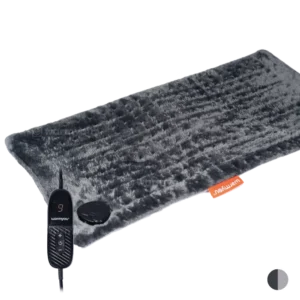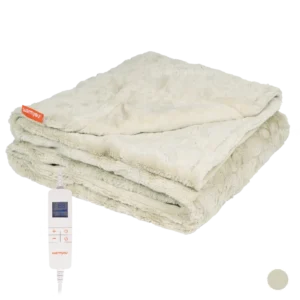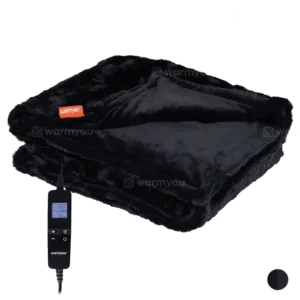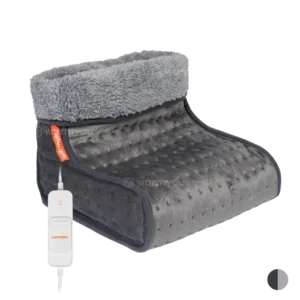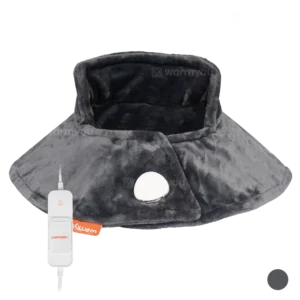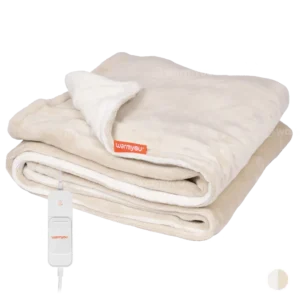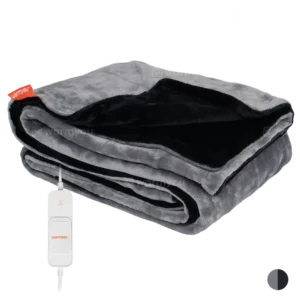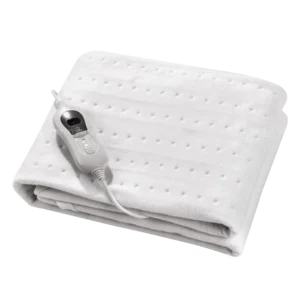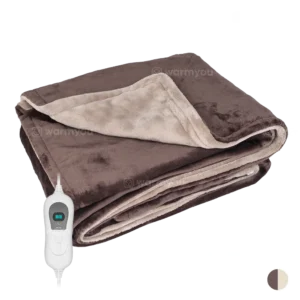Heat has been a natural way to relieve physical discomfort for centuries. Think of a warm bath after a long day or a hot water bottle on your stomach for cramps. Today, modern solutions make this principle even more accessible: electric heating pads and electric neck and back warmers. These products provide targeted, consistent heat and are not only pleasant in winter but also useful year-round as a supportive tool. In this blog post, we explain how these products can help with common complaints, what to look out for, and why heat isn’t always the right choice.
How does heat actually work on the body?
Heat causes blood vessels to dilate. This improves blood flow in the treated area, stimulating the supply of oxygen and nutrients and speeding the removal of waste products. Heat also often has a relaxing effect on muscles and tissues. The combination of improved circulation and relaxation leads to relief from muscle pain or stiffness in many people.
Common uses of electric heating mats and warmers
1. Muscle pain and tense muscles
One of the most common uses of electric heating pads is to relieve muscle pain. Think of tense shoulders after a day at the computer or tired legs after exercising. Applying heat to the affected area relaxes the muscles, reducing tension and often alleviating pain. Neck and back warmers are particularly ideal for these types of complaints, as they completely enclose the area and distribute the heat evenly.
2. Osteoarthritis and joint complaints
Many people with osteoarthritis find their symptoms worsen in cold and wet conditions. While heat doesn’t cure osteoarthritis, it can temporarily reduce joint stiffness and increase comfort. A heating pad applied to the lower back or knee, for example, can be helpful for morning stiffness or after a period of inactivity. It’s important to emphasize that heat is generally not suitable for people with inflammation (more on this below).
3. Menstrual pain
Applying heat to the lower abdomen is a proven method for relieving menstrual cramps. The heat relaxes the uterine muscles, which can soothe cramps. Electric heating pads are particularly suitable for this because they are safe, consistent, and adjustable. Unlike a hot water bottle, you don’t have to worry about cooling down or refilling the hot water.
4. Lower back pain
Chronic or acute lower back pain is a common complaint, especially among people with sedentary jobs or poor posture. An electric back warmer can provide relief by relaxing the muscles in the lower back and improving blood circulation. Heat can be especially helpful in calming the muscles, especially in cases of lumbago (a sudden, painful spasm in the back).
5. Abdominal pain or intestinal cramps
Besides menstrual complaints, heat can also provide relief from other types of abdominal pain, such as intestinal cramps or mild digestive issues. Heat relaxes the abdominal muscles and can stimulate bowel movements, which can reduce bloating.
6. General relaxation and stress reduction
Finally, heat mats and warmers are also used for pure relaxation. Stress often manifests physically: tense shoulders, a stiff neck, headaches, or a restless feeling throughout the body. By regularly incorporating a warm session—for example, in the evening on the couch or in bed—you can help the body relax and unwind.
When should you be careful with heat?
While heat has many advantages, it’s not always suitable. In some situations, it’s actually better not to use heat. Below are some important warnings:
❌ In case of fresh injuries
A sprain, contusion, or bruise often involves internal bleeding or swelling. In such cases, cold is actually more effective than heat. Heat can worsen swelling due to the increased blood flow. For these types of injuries, always wait until the swelling has subsided before applying heat.
❌ For open wounds or infections
Heat can encourage bacterial growth, which can worsen an infection. If you have a wound, rash, or infected skin area, don’t use a heat mat on that area.
❌ In case of inflammation
Inflammation is often accompanied by heat, redness, and swelling. Adding additional heat in such cases is usually not a good idea and can worsen the symptoms. If in doubt, consult a doctor.
❌ In case of numbness or reduced temperature sensitivity
People with nervous system problems or certain chronic conditions may have difficulty sensing when something is getting too hot. In such cases, you risk burning without even realizing it. In such cases, use heat products only with extra caution or in consultation with a professional.
Heat: a valuable resource all year round
While electric heating mats and warmers are extra comfortable in winter, they’re also very useful in summer and the transitional seasons. Think of athletes who regularly suffer from muscle pain, or people with chronic conditions like osteoarthritis or stress-related muscle tension. So, their use certainly doesn’t have to be limited to cold days.
Moreover, modern heating mats and warmers often feature multiple heat settings and an automatic shut-off, making them safe and comfortable to use. Many models are also flexible and easy to transport, so you can use them at home, in the office, or even on the go.
Conclusion
Electric heating pads and neck and back warmers can naturally and comfortably provide relief for common complaints such as muscle pain, menstrual cramps, and stress. They help your body relax and promote blood circulation, which often provides relief. At the same time, it’s important to use heat consciously. Not every physical ailment benefits from heating. – When in doubt, always consult a doctor or healthcare professional.


